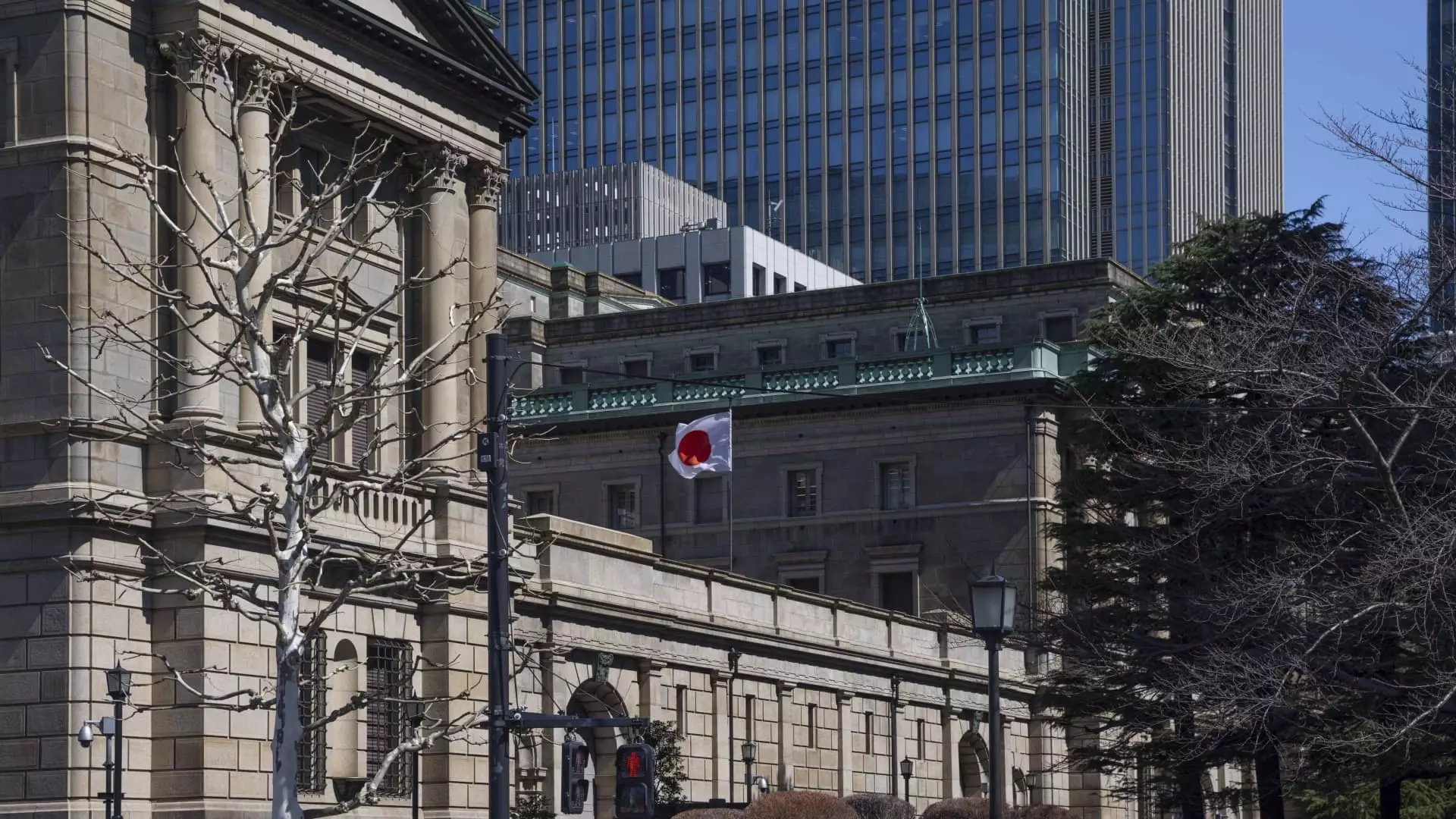In the sprawling landscape of modern economics, Japan faces a formidable challenge: the accelerating weakness of the yen. This isn’t just a statistical hiccup; it’s a full-blown crisis that has begun to significantly affect daily life for Japanese citizens. Households are feeling the sting as living costs skyrocket due to the yen’s depreciation, forcing the government’s hand to intervene in an increasingly volatile economic environment. The ruling Liberal Democratic Party (LDP), under the astute observation of policy chief Itsunori Onodera, recognizes this impending threat but finds itself caught in a web of complex international entanglements and stagnant domestic policies.
Onodera’s insistence on not using U.S. Treasury holdings as leverage against tariffs imposed by the United States exemplifies a delicate balancing act. A pragmatist at heart, Onodera seems to understand that while these assets are crucial, engaging in tit-for-tat measures the likes of which we see in less stable economies would only serve to undermine Japan’s international credibility. The fear is not merely about financial loss, but about the potential for a broader economic fallout that could reverberate across the globe.
Currency Policy: The Heart of the Matter
The crux of the issue lies in the contentious arena of currency policy. The weak yen, presented as a factor pushing inflation rates skyward, is an awkward beast: its decline has historically been a double-edged sword. While a weaker currency may offer a temporary lifeline for Japanese exports, the long-term ramifications for domestic purchasing power cannot be ignored. Japan’s identity as an export-dependent economy means that policymakers like Onodera are caught in the grip of conflicting priorities: the need for currency devaluation for competitive advantage versus the necessity to curb household inflation.
Upcoming trade negotiations with the U.S. could see the currency debate take center stage, and pressures are likely to mount both from Washington and within Japan itself. Concerns surrounding how the Bank of Japan is managing interest rates amidst global monetary tightening hint at a narrative of stagnation. The slow pace of policy change has put the central bank under the microscope, raising questions about the efficacy of its ultra-loose monetary strategy. The economic landscape remains tense with speculation about imminent interventions, and while the yen recently clawed back some ground due to a broader dollar sell-off, such rallies feel like a fleeting mirage rather than a sustainable recovery.
A Historical Perspective: Lessons Must Be Learned
Historically, Japan has sought to control the volatility of its currency, wary of scenarios seen in the past where a strong yen choked off growth and stifled the very industries that drive its economy. Yet the approach of holding the yen down at all costs now feels increasingly anachronistic in a world that values balance and fairness. As the U.S. Federal Reserve continues to tighten monetary policy, the divergence with Japan’s monetary stance could create asymmetries detrimental to Tokyo’s economic health.
Moreover, the staggering figure of $1.079 trillion in U.S. Treasury holdings reveals not just strength but vulnerability. Japan’s status as the largest foreign holder of U.S. debt makes its economy intricately tied to decisions made on the other side of the Pacific. This interdependence suggests that Japan needs to rethink its long-term strategy not just in terms of currency manipulation but with a broader lens focused on industrial competitiveness and sustainable growth.
Confronting the Future: An Opportunity for Reinvention
While the negatives around a weak yen are evident, they also present Japan with a unique opportunity for reinvention. The LDP’s focus on bolstering domestic industries is a step in the right direction; however, it shouldn’t stop at mere competitiveness. This is an opportune moment for Japan to embrace innovation, invest in sustainable practices, and diversify its economy. Over-reliance on the export sector can be perilous, as the current predicament attests.
What is crucial now is a commitment to long-term reforms that foster resilience rather than mere reactionary measures at the brink of crisis. With the winds of change swirling around global economics, Japan has the chance to reframe its narrative—not just as a nation navigating the storm of currency depreciation, but as a forward-thinking society ready to adapt, innovate, and ultimately thrive in the face of adversity. The stakes are high, and the path forward must be navigated with agility, courage, and the political will to challenge the status quo.


Leave a Reply